#standard handbook of machine design
Explore tagged Tumblr posts
Text
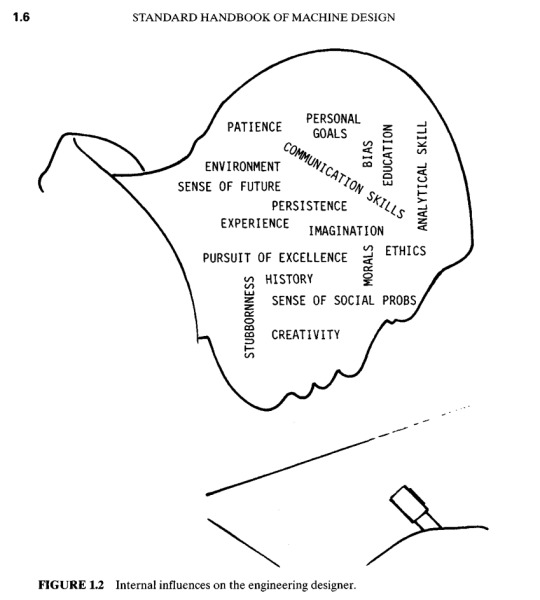
3 notes
·
View notes
Photo

Smooth & Organized Binding with Burostyle’s A4 Manual Punch & Bind Machine Whether in the office or at home crafting your own stationery, binding documents is often the final—and arguably most important—step. A reliable, precise punch & bind device brings a professional touch to every report, handbook, or photo album. Burostyle’s A4 Manual Punch & Bind Machine combines ease of use with lasting durability. Key Features Punch up to 12 sheets at once Optimized for standard A4 (80g/㎡) paper, this machine lets you punch through a stack of up to 12 sheets in a single action, reducing time spent on repetitive tasks. Sturdy metal construction A full-metal frame and high-strength alloy punch heads ensure clean, burr-free holes. The base features a built-in ruler for easy alignment, maintaining stability even under heavy use. Ergonomic, foldable handle Designed for comfort, the ergonomic handle minimizes fatigue during extended operation. When not in use, simply fold it down for a neater workspace. Compatible with various binding coils From spiral to plastic or wire coils (Ø6–12 mm), this machine adapts to different styles, whether you’re binding reports, manuals, or personal albums. User Impressions Clear, satisfying punch feedback Each press delivers consistent resistance and a crisp “click,” signaling a perfect punch every time. Straight, uniform holes Side guides and base markings ensure every booklet has perfectly aligned margins—no more skewed pages. Clutter-free desk With its foldable design, the machine transforms into a compact unit, enhancing both aesthetics and space efficiency. Ideal Scenarios Daily office tasks: Organizing contracts and reports. Education & training: Bulk-binding lecture notes and study guides. Creative crafts: Journals, photo albums, DIY zines. Studio presentations: Sample books, proposal portfolios, photo showcases.
2 notes
·
View notes
Text
federation employee handbook that foolish found in the fed breakroom! (transcript)

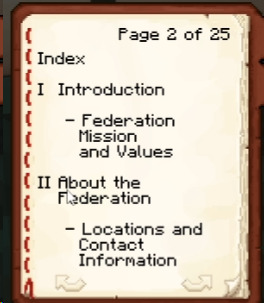
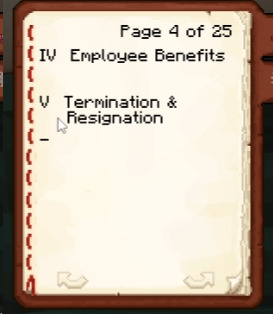
Federation Employee Handbook (12th edition) Index: I Introduction - Federation Mission and Values II About the Federation: - Locations and Contact Information III Policies - Code of Conduct - Dress Code - Workplace Safety - Violence Prevention - Whistleblower Policy and Reporting Violations IV Employee Benefits V Termination and Resignation

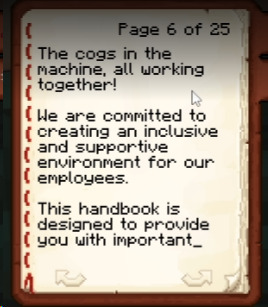
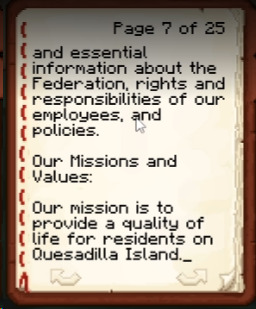
I Introduction: Welcome to The Federation! We are delighted to have you join our team. At the Federation our employees are the lifeblood of our organization. The cogs in the machine, all working together! We are committed to creating an inclusive and supportive environment for our employees. This handbook is designed to provide you with important and essential information about the Federation, rights and responsibilities of our employees, and policies Our Missions and Values: Our mission is to provide a quality of life for residents on Quesadilla Island.

Core Values: - Integrity: Upholding ethical standards in all our actions. - Excellence: In everything we do. - Teamwork: Collaborating, respecting diversity, and valuing the contributions of employees and residents alike.
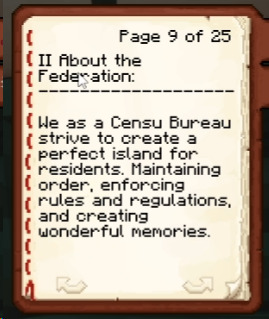

II About the Federation: We as a Census Bureau strive to create a perfect island for residents. Marinating order, enforcing rules and regulations and creating wonderful memories. Our organization strives to create absolute perfection. We achieve this by maintaining order, enforcing rules, and creating wonderful memories and experiences.

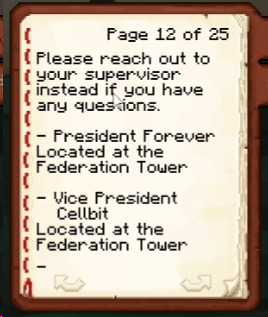
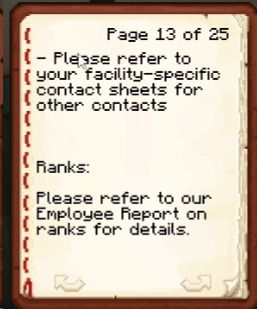
Location and Contact Information: - Census Bureau Agent While the Census Bureau Agent is not an employee and is very busy, it is not easy to get a hold of them. Please reach out to your supervisor instead if you have any questions. - President Forever: Located at the Federation Tower - Vice President Cellbit: Located at the Federation Tower. -Please refer to your facility-specific contact sheets for other contacts. Ranks: Please refer to our Employee Report on ranks for details.



III Policies: Code of Conduct: At The Federation we expect all employees to conduct themselves with both professionalism and integrity. Our key elements: - Transparency and honesty - Respect for colleagues - Data protection and confidentiality - Order with regulations and laws - Avoiding conflicts Dress Code: Employees must wear their assigned uniform on and off working hours. Please have your work badge on hand at all times. This is designed to ensure both a professional and safe work environment for all employees.
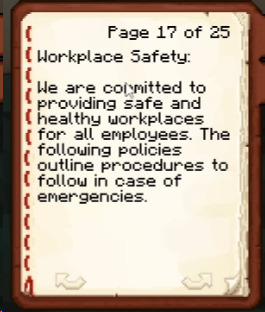


Workplace Safety: We are committed to providing safe and healthy workplaces for all employees. The following policies outline procedures to follow in case of emergencies. Violence Prevention: The Federation has a strict zero-tolerance policy towards threats and violence's in the workplace. We are committed to maintain order and secure environments for not only employees but residents as well. Regarding threats and violence from residents, please refer to your supervisor for further information.


Whistleblower Policy and Report Violations: We highly encourage our employees to report any concerns relating to illegal activities from both employees and residents. This policy information regarding whistleblowers. Reports will be shared anonymously. You may reach out to your supervisor for further information on our policies.
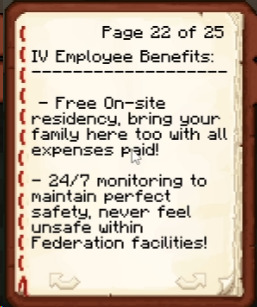
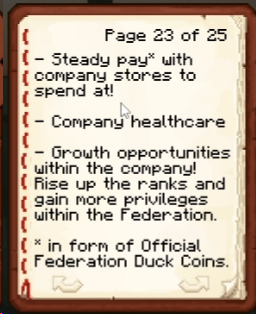
IV Employee Benefits: - Free, On-site residency, bring your family here too with all expenses paid! - 24/7 monitoring to maintain perfect safety, never feel unsafe within Federation facilities! - Steady pay* with company stores to spend at! - Company healthcare - Growth opportunities within the company! Rise up the ranks and gain more privileges within the Federation. * in form of Official Federation Duck Coins.
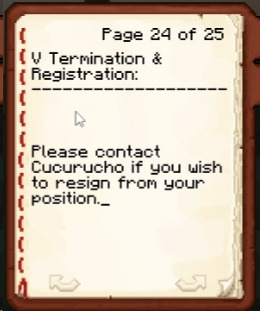
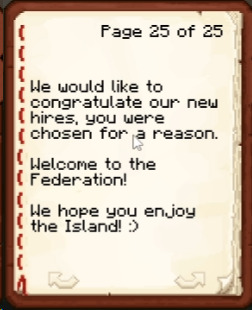
V Termination and Registration: Please contact Cucurucho if you wish to resign your position.
We would like to congratulate our new hires, you were chosen for a reason. Welcome to Federation! We hope you enjoy the Island! :)
28 notes
·
View notes
Text
The Comprehensive Handbook on Image Annotation: Methods and Instruments.
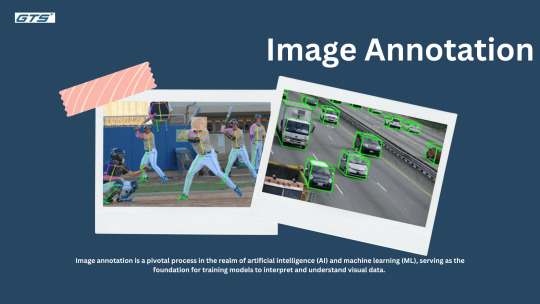
Introduction:
Image Annotation plays a crucial role in the fields of machine learning and artificial intelligence, as it involves the careful labeling of images to train models for the recognition and interpretation of visual information. This essential process empowers machines to detect objects, comprehend scenes, and execute tasks that necessitate visual understanding.
Understanding Image Annotation
Fundamentally, image annotation consists of assigning labels or metadata to images. These labels can represent various components within an image, including objects, boundaries, or particular features. The annotated data acts as a training resource for machine learning models, enabling them to learn and generate accurate predictions for new, previously unseen images.
Key Techniques in Image Annotation
Bounding Box Annotation: This method involves creating rectangular boxes around objects in an image, assisting models in identifying and locating these objects.
Semantic Segmentation: In this approach, each pixel in an image is assigned a class label, facilitating a comprehensive understanding of the image at the pixel level.
Polygon Annotation: For objects with non-standard shapes, polygon annotation provides a means for precise outlining, ensuring that models can accurately learn the shape of the object.
Key Point Annotation: This technique involves marking specific points of interest within an image, such as facial landmarks or joint positions, which is vital for applications like pose estimation.
The applications of image annotation encompass a wide range of fields:
Autonomous Vehicles: Annotated images play a critical role in enabling self-driving cars to identify road signs, pedestrians, and various obstacles, thereby facilitating safe navigation.
Medical Imaging: In the medical field, annotated images are instrumental in the identification and diagnosis of diseases, significantly improving the precision of AI-based diagnostic tools.
Retail: Retail businesses utilize annotated images to enhance product recognition, streamline inventory management, and improve the shopping experience through visual search functionalities.
Applications of Image Annotation

The versatility of image annotation spans numerous industries:
Autonomous Vehicles: High-quality annotated images train models to recognize and respond to various road scenarios, ensuring safety and efficiency in self-driving cars.
Healthcare: In medical imaging, annotated data assists in the detection and diagnosis of diseases by highlighting areas of interest, such as tumors or fractures.
Retail: Image annotation enables automated inventory management and enhances customer experiences through visual search capabilities.
Agriculture: Annotated images help in monitoring crop health, detecting diseases, and managing yields by analyzing aerial imagery.
Challenges in Image Annotation
Despite its significance, image annotation faces several challenges:
Scalability: The manual annotation of extensive datasets is both time-consuming and labor-intensive.
Consistency: Maintaining uniformity in annotations throughout a dataset is essential for ensuring model accuracy.
Complexity: Certain images may contain intricate details that necessitate advanced annotation techniques and specialized knowledge.
Advancements in Annotation Tools
In response to the challenges faced in the field, a variety of annotation tools have been created:
VGG Image Annotator (VIA): This is a straightforward, standalone tool that facilitates manual annotation for images, audio, and video content.
Computer Vision Annotation Tool (CVAT): An open-source, web-based platform specifically designed for the annotation of digital images and videos, it is extensively utilized for tasks such as object detection and image segmentation.
Conclusion
Image annotation is fundamental to the advancement of computer vision applications. As artificial intelligence progresses, the accuracy and quality of annotated data will be essential in developing intelligent systems that can comprehend and interpret the visual environment.
Visit Here: https://gts.ai/services/image-and-video-annotation/
0 notes
Text
The Complete Guide to Forklift Certification: What You Need to Know
Revealing the mysteries of expert forklift driver education: Everything you need to know to get certified as a forklift operator is covered in this thorough handbook. Forklift driving is a highly sought-after skill if you’re considering a construction or logistics job. Anyone wishing to become licensed must take forklift driving classes for operating expertise, workplace safety, and legal compliance. You can make wise decisions about your professional path and navigate the process more quickly if you understand the certification procedure.
Why is Forklift Certification Important?
Certification for forklifts is more than simply a document. It is a legal necessity for most employers in sectors like manufacturing, construction, and warehousing. In addition to limiting your employment options, not having the proper certification puts you and other people in danger. A qualified forklift operator has received training on operating the machine properly, preventing workplace accidents, and guaranteeing adherence to OSHA (Occupational Safety and Health Administration) regulations.
What Does a Forklift Driving Course Cover?
Three primary topics are usually covered in a forklift driving course:
Theoretical Knowledge: You will learn about various kinds of forklifts, safety rules, load control, and equipment upkeep. Gaining an understanding of these ideas guarantees that you are equipped to work in a variety of settings.
Practical Training: Hands-on training is crucial for mastering forklift operations. This part of the course allows you to practice using the forklift under the guidance of a certified instructor.
Assessment and Certification: You will undergo an evaluation after completing the theoretical and practical sessions. Passing this assessment will earn you your forklift certification, valid for three years in most regions.
How to Choose the Right Forklift Driving Course
Choosing the right course is a critical decision that can impact your career. Here are a few factors to consider:
Accreditation: Ensure that the course is accredited by relevant authorities, like OSHA in the United States or other local regulatory bodies in your country.
Instructor Expertise: Certified and experienced instructors can provide invaluable insights, making your learning experience more effective.
Course Flexibility: Some training centers offer online theory courses, which can be convenient if you balance work or other commitments.
Practical Experience: Look for courses that provide sufficient hands-on training with different types of forklifts.
The Benefits of Getting Certified
Becoming a certified forklift driver opens doors to various job opportunities and can increase your earning potential. Accredited drivers are in demand across many industries, and having this certification can give you a competitive edge over non-certified applicants. Additionally, certified drivers often benefit from a safer work environment, as they are better equipped to handle unexpected situations and avoid accidents.
Standard Forklift Types You’ll Learn About
During your forklift training course, you’ll likely become familiar with several types of forklifts, such as:
Counterbalance Forklifts: The most common type, ideal for loading and unloading heavy goods.
Reach Trucks: Designed for working in narrow aisles and high shelves
Telehandlers: Equipped with extendable arms, used in construction and agriculture. Knowing how to operate different types of forklifts can make you more versatile and valuable in the workplace.
Final Thoughts
Forklift certification is crucial for anyone serious about entering or advancing in the logistics and construction industries. Investing in a high-quality forklift driving course will ensure you meet legal requirements and give you the skills and confidence to thrive in your role. Whether you’re just starting or looking to update your credentials, forklift certification is an investment that pays off in safety, job security, and career growth.
By ensuring you’re certified and trained correctly, you’ll be well-equipped to take on challenging roles and make your mark as a safe, skilled, and efficient forklift operator.
0 notes
Text
[ad_1] In recent times, the meals business has witnessed a surge in innovation, with probably the most intriguing developments being the introduction of pizza merchandising machines on the market. These machines have reworked how pizza is made, bought, and consumed, providing a handy and environment friendly various to conventional strategies. However how do they evaluate to the traditional pizza maker? On this article, we'll discover the rising development of pizza merchandising machines, their advantages, key options to think about when buying both a pizza merchandising machine or a pizza maker, market demand, potential return on funding (ROI), and the place to search out these merchandise on the market. The Rising Development of Pizza Merchandising Machines Pizza merchandising machines are shortly gaining reputation worldwide, due to their potential to offer scorching, freshly made pizza on demand. These machines are designed to organize and cook dinner pizza inside minutes, providing clients a novel expertise that blends comfort with high quality. The rise of those machines might be attributed to a number of elements, together with the growing demand for quick-service meals choices and the rising development of automation within the meals business. In contrast to conventional pizza makers, which require handbook operation, pizza merchandising machines automate your complete course of—from dough preparation to cooking and serving. This automation not solely reduces the necessity for expert labor but in addition ensures consistency within the high quality of the pizzas produced. Advantages of Pizza Merchandising Machines Comfort: Pizza merchandising machines function 24/7, permitting clients to buy pizza at any time of day or night time. That is notably advantageous in places reminiscent of faculty campuses, hospitals, and busy city areas the place late-night meals choices could also be restricted. Effectivity: These machines are designed to provide a pizza in only a few minutes, making them a great resolution for purchasers on the lookout for a fast meal. This can be a stark distinction to conventional pizza makers, which can require extra effort and time to organize a pizza from scratch. Consistency: Since pizza merchandising machines observe a standardized course of, the standard of the pizza stays constant, whatever the time or location. This consistency might be difficult to attain with conventional pizza makers, particularly when completely different cooks are concerned. Minimal Labor: Pizza merchandising machines require minimal human intervention, lowering the necessity for expert labor. This may result in vital price financial savings for companies, notably in areas the place labor prices are excessive. Attraction: The novelty of pizza merchandising machines can draw clients in, particularly in areas the place such know-how remains to be new. The curiosity issue can increase gross sales, as persons are desirous to check out the machine and expertise the comfort it affords. Pizza Merchandising Machines vs. Conventional Pizza Makers Whereas pizza merchandising machines provide quite a few advantages, conventional pizza makers nonetheless have their place out there. The selection between the 2 largely is determined by the precise wants and objectives of the enterprise or particular person. Customization: Conventional pizza makers permit for higher customization, enabling cooks to experiment with completely different toppings, sauces, and dough sorts. This degree of creativity is commonly restricted in pizza merchandising machines, which usually provide a set menu. Style: Whereas pizza merchandising machines are designed to provide high-quality pizzas, some purists argue that the style of a pizza made by a talented chef utilizing a standard pizza maker is superior. The flexibility to manage each side of the cooking course of, from dough fermentation to oven temperature, offers conventional pizza makers an edge on this regard.
Preliminary Funding: Pizza merchandising machines sometimes require the next preliminary funding in comparison with conventional pizza makers. Nevertheless, this price might be offset by the decreased labor prices and the potential for twenty-four/7 operation. Key Options to Contemplate When Buying When deciding between a pizza merchandising machine and a standard pizza maker, there are a number of key options to think about: Capability: Contemplate the amount of pizzas you propose to provide every day. Pizza merchandising machines are perfect for high-traffic areas the place demand is fixed, whereas conventional pizza makers could also be extra appropriate for eating places or cafes with a extra personalised service method. House: Pizza merchandising machines are bigger and require more room in comparison with conventional pizza makers. Guarantee you will have enough room to accommodate the machine, particularly should you plan to put it in a heavy-traffic space. Upkeep: Common upkeep is essential for each pizza merchandising machines and conventional pizza makers. Nevertheless, merchandising machines might require specialised technicians, which might add to the general price of possession. Menu Choices: If providing all kinds of pizza flavors is necessary to your online business, a standard pizza maker could be the higher choice. Pizza merchandising machines are sometimes restricted within the variety of recipes they will retailer and put together. ROI: Calculate the potential return on funding by contemplating elements reminiscent of location, working prices, and anticipated gross sales. Pizza merchandising machines might provide a faster ROI in high-demand areas, whereas conventional pizza makers could be extra worthwhile in a sit-down restaurant setting. Market Demand and Potential ROI The market demand for pizza merchandising machines is steadily growing, pushed by the rising want for comfort and the growth of the quick-service restaurant (QSR) business. Companies that put money into these machines can faucet into this demand and probably obtain a excessive ROI, particularly in busy places like malls, airports, and universities. Conventional pizza makers, however, proceed to thrive within the restaurant business, the place the main focus is on high quality, style, and buyer expertise. For companies on this sector, the ROI will depend upon elements reminiscent of location, menu pricing, and buyer loyalty. The place to Discover Pizza Merchandising Machines and Pizza Makers for Sale In the event you're curious about buying a pizza merchandising machine or a standard pizza maker, there are a number of choices out there: On-line Retailers: Web sites like Alibaba and Amazon provide a spread of pizza merchandising machines and conventional pizza makers on the market. These platforms assist you to evaluate costs, learn buyer opinions, and select the most suitable choice to your wants. Specialty Suppliers: Corporations focusing on industrial kitchen gear usually have a choice of pizza merchandising machines and conventional pizza makers. These suppliers can present skilled recommendation and provide upkeep companies to make sure your gear operates easily. Direct from Producers: Some producers promote on to companies, providing custom-made options and bulk reductions. This selection might be notably useful should you plan to buy a number of machines or want a tailor-made resolution for your online business. Conclusion Because the meals business continues to evolve, pizza merchandising machines symbolize an thrilling innovation that gives comfort, effectivity, and a brand new approach to take pleasure in a traditional favourite. Whereas conventional pizza makers nonetheless maintain their floor in delivering custom-made, high-quality pizzas, the choice between the 2 is determined by your online business mannequin, buyer base, and operational objectives. By fastidiously contemplating
the options, market demand, and potential ROI, you can also make an knowledgeable alternative that most accurately fits your wants. [ad_2] Supply hyperlink
0 notes
Text
10 Best Mechanical Engineering Books to Read in 2024 - ACEIT
As a mechanical engineering student, having a solid foundation in the core principles & concepts of the field is crucial. Here are some of top mechanical engineering books that are must-reads for students:
1. Shigley's Mechanical Engineering Design by Richard Budynas and Keith Nisbett
This comprehensive textbook covers machine design fundamentals, including stress analysis, materials selection, and failure prevention. It provides a practical approach to designing machine components and is considered a standard reference for mechanical engineers.
2. Marks' Standard Handbook for Mechanical Engineers edited by Ali Sadegh and William Worek
First published in 1916, this handbook has been a go-to resource for mechanical engineers for over a century. It covers a wide range of topics, from thermodynamics and heat transfer to manufacturing processes and materials science. The latest edition emphasizes emerging technologies and trends in the field.
3. Machinery's Handbook by Erik Oberg, Franklin Jones, Holbrook Horton, and Henry Ryffel
This reference book is essential for anyone working in the manufacturing industry. It provides detailed information on machinery, metalworking, manufacturing, and even architecture. The handbook is divided into sections for easy navigation and includes formulas, charts, and tables for quick reference.
4. Thermodynamics: An Engineering Approach by Yunus Cengel and Michael Boles
This textbook offers a clear and concise introduction to the principles of thermodynamics. It uses a practical approach to help students develop an intuitive understanding of the subject matter. The book includes numerous examples and illustrations to reinforce the concepts.
5. Fluid Mechanics by Frank White
Fluid mechanics is a fundamental subject in mechanical engineering, and this textbook provides a comprehensive overview of the topic. It covers both theoretical and practical aspects of fluid flow, including viscous flow in pipes, boundary layer theory, and compressible flow. The book also includes numerous examples and practice problems.
6. Heat and Mass Transfer: Fundamentals and Applications by Yunus Cengel and Afshin Ghajar
This textbook offers a well-rounded introduction to the principles of heat and mass transfer. It covers both steady-state and transient heat transfer, as well as mass diffusion. The book includes numerous examples and illustrations to help students understand the concepts and apply them to real-world situations.
7. Strength of Materials by Stephen Timoshenko and James Gere
This classic textbook provides a solid foundation in the principles of solid mechanics. It covers topics such as stress, strain, torsion, and bending, and includes numerous examples and practice problems. The book is widely used in undergraduate mechanical engineering programs.
8. Engineering Mechanics: Statics and Dynamics by Russell Hibbeler
This two-volume textbook provides a comprehensive introduction to the principles of engineering mechanics. Volume 1 covers statics, while Volume 2 covers dynamics. The book includes numerous examples and practice problems, as well as detailed illustrations to help students visualize the concepts.
9. Manufacturing Processes for Engineering Materials by Serope Kalpakjian and Steven Schmid
This textbook provides a detailed overview of the various manufacturing processes used in engineering, including casting, forming, machining, and joining. It covers the principles, equipment, and applications of each process, and includes numerous examples and illustrations.
10. Mechanical Vibrations by Singiresu Rao
Vibrations are an important consideration in mechanical design, and this textbook provides a comprehensive introduction to the topic. It covers both single-degree-of-freedom and multi-degree-of-freedom systems and includes numerous examples and practice problems. The book also includes a chapter on finite element analysis of vibrations. There are so many colleges in Jaipur but Arya College of Engineering & I.T. is the best college in Jaipur Rajasthan that provides a solid foundation in the core principles and concepts of mechanical engineering. By studying these books and applying the concepts to real-world problems, students can develop the skills and knowledge needed to succeed in their careers as mechanical engineers.
0 notes
Text
Getting Around IES EXAM MECHANICAL ENGINEERING: A Complete Handbook
One of the most prominent and difficult tests for engineers in India is the Indian Engineering Services (IES) exam. The IES test is administered by the Union Public Service Commission (UPSC) with the goal of hiring engineers for a range of technical and administrative roles in the Indian government. The IES Mechanical Engineering branch is especially well-liked, drawing thousands of applicants annually because of the respect that comes with working for the government and the rich career prospects.
The IES Exam's Structure There are three phases to the Mechanical Engineering IES exam: Initial Inspection: There will be two papers in this objective exam: Paper I: Engineering aptitude and general studies (200 marks) Paper II: Specialized paper on mechanical engineering (300 marks) As a screening examination, the results of the preliminary exam are not taken into account for the final ranking. The only applicants eligible to take the Mains test are those who pass this level.
Main Examination: This stage is descriptive and consists of two papers, each of 300 marks: Paper I: Mechanical Engineering Paper II: Mechanical Engineering The Mains exam tests the candidate's in-depth knowledge of Mechanical Engineering subjects. Personality Test/Interview: Candidates who qualify the Mains exam are called for the Personality Test, which carries 200 marks. The interview assesses the candidate’s personality, leadership qualities, and ability to handle stressful situations.
Planning Approach Because of the IES exam's wide syllabus and competitive format, preparation calls for a methodical and rigorous approach. The following are important tactics for prospective candidates: Recognizing the Exam Pattern and Syllabus:Comprehend the material and test format in its entirety. Thermodynamics, Fluid Mechanics, Heat Transfer, Manufacturing Technology, and Machine Design are just a few of the topics covered in the Mechanical Engineering course.
Study Materials and Resources: For each subject, consult a standard textbook and a reference book. Highly recommended are books by writers such as R.K. Rajput, P.K. Nag, and S.S. Rattan. If needed, sign up for coaching sessions; they offer study materials and organized advice. A plethora of tools, such as practice questions, mock exams, and video lectures, are now available on online sites.
Frequent Exercise and Review: To gauge your level of preparation and develop your time management abilities, solve past years' question papers and take frequent practice exams. Prioritize intellectual comprehension before memorization. To effectively recall material, go over key ideas and formulae on a regular basis.
Time management: Make a study plan that includes all of the courses and provides lots of time for practice and review. Give subjects and topics you find challenging additional time. Keeping Current: Current events should be kept up to date, particularly those pertaining to science and technology, as they are a crucial component of the General Studies paper on the preliminary test.
Career Prospects A career in IES offers a range of opportunities and benefits. Engineers who clear the IES exam are placed in various government departments and organizations such as: Indian RailwaysCentral Public Works Department (CPWD) Indian Army Corps of Engineers Indian Navy's Directorate of Naval Architecture Border Roads Organization Indian Ordnance Factories
Significant duties associated with these roles include project management, enforcing policy, and providing technical oversight for government initiatives. IES officers also benefit from a variety of benefits, including possibilities for continued education and training, residential housing, medical facilities, and competitive pay in addition to employment security. In a briefA distinguished position in the Indian government can be obtained via passing the IES test for Mechanical Engineering. Through committed study, a thorough comprehension of the content, and regular practice, candidates can succeed in this very competitive test. The benefits of a prosperous IES career, which include not just a job but also a lifetime of service and national contribution, make the demanding preparatory process worthwhile.
Start Your Preparation With: https://gameacademy.in/ / https://clppenny.page.link/cTBm
Recomended: https://www.youtube.com/@gblions / https://www.youtube.com/@gblionsaeje
0 notes
Text
An in-depth handbook for choosing the ideal garage door materials for your home
For all your storage requirements, there is a suitable system for your garage or storage spaces. They range from pallet racking systems, to shelving systems, including even vertical storage machines. Whether it comes to storage of bulk goods or handling of small parts, Bin Dasmal Doors has a system to save space and optimize storage capacity.
In garages, storage management can be well planned and optimized by the implementation of racking and shelving. These provide storage designs that can be optimized to accommodate the systems that determine how items are moved and used, saving time, and creating productive storage solutions. Bin Dasmal Doors understands this potential, suggesting suitable systems for garage storage solutions using shelving and racking systems.
Bin Dasmal Doors’ storage solutions, and resources, provide the right insights for garage storage systems and solutions.
Cantilever Racking
Cantilever racking is a system designed to facilitate safe and organized storage of long and heavy loads. Cantilever systems are effective and efficient alternatives to conventional lighter storage solutions. They consist of robust designs using standard structural steel sections, suitable for all types of garage storage solutions by means of shelving and racking systems.
2. Extra Heavy-Duty Racking
A unique storage product with unlimited capabilities, extra heavy-duty racking can support for heavier weights than with conventional pallet racking of up to 20 tons over an eight-meter span. Clear entry spans up to 12 meters.
3. Vertical Racking
This racking system is ideal for storage of long items, with varying vertical lengths. There is ease of access of hand picking of products, and another bonus of this storage system is that minimal floor space is needed.
4.Bars and Tubes Storage
Bin Dasmal Doors offers ideal solutions for storage of long and bulky products such as bars or tubes. Unhindered access to products is offered, with no front uprights experienced in other racking styles. This racking system provides benefits such as:
a) Increase of vertical storage capacity
b) Allow access to selective shock
c) Speed up of materials handling
5.Sheet Metal Storage
Sheet metal is a tough material to handle since it can be heavy, bulky, slippery with sharp corners, difficult to grip. Suitable storage and handling of sheet metal eliminates damage to stock, helping to meet health and safety requirements.
6.Timber Storage
Bin Dasmal Door’s cantilever racking system is an ideal tinder storage solution since they:
a) Reduce timber footprints on site
b) Limitation of the chances of timber getting damaged
c) Enabling stock rotation
d) Allowing access to individual timber packs
e) Saving timber stored on the floor from moisture damage
f) Allowing airing of timber
g) Reduction of stock waste
Among the leading racking & shelving companies in UAE, Bin Dasmal Doors are among the best cantilever racking suppliers in Dubai. Get in touch today for further information.
0 notes
Text
someone just came into the xkcd chatroom trying to recruit for that open source medical equipment movement.
I have serious concerns about this because as someone with deep respect for engineering complexity, medical equipment scares the shit out of me.
I was taught to have a great deal of respect for engineering standards and regulations. I’m studying an engineering degree. I think that building codes, design standards and design theory handbooks are some of the most high value parts of engineering that serves the general public. It’s why you can trust that most buildings you go into won’t collapse on you, and why you can be sure that your prosthetic limbs won’t dig into your skin and cause an infection.
I have written about this before
When I see one of those "this person couldn't afford a wheelchair so a high school shop class built one for them" I think about how in 8 years that person might get nerve damage. Or fall down an ADA standard ramp.
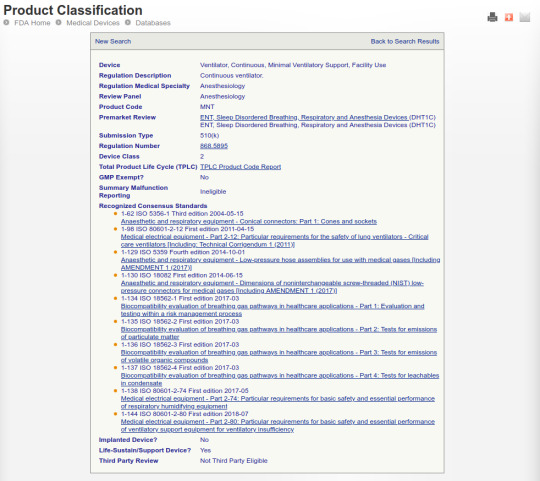
Here’s the list of standards the FDA puts out for respirators. It’s actually pretty short, but testing each one of these takes ages, and a lot of expertise. No less than four of these are specifically about body-compatible materials for use in medical equipment. That’s not to mention the ergonomic, machine-compatibility and general safety requirements.
the vast majority of 3D printers are not suitable for medical equipment. They produce materials that are not only unsanitary right out the box, but also almost impossible to sanitize. They’re frangible, made of body-unsafe materials, liable to outgas or leach into the bloodstream. They provide ample porous surface for bacterial growth. Using 3D printed parts in place of injection moulded single use plastic will only occasionally help and, if you’re dealing with people with weakened immune systems, may actively hurt and do more damage than nothing.
there are lots of places where fast hacky solutions are a good idea. If you're trying to spring up a telecom network after a flood, throwing some routers together and putting everyone on one LAN is better than nothing.
Medicine is not like that. Large public works are not like that.
I just get mad when people are like "if this college student could make a prosthetic arm out of lego and clay, why don't we use that for everyone" is because we used to do this and we found out it's extremely bad for you.
<griffin mcelroy voice> The built environment is, a trust box, that I step into, and form a silent contract with whoever's name is on the design papers.
4K notes
·
View notes
Text
[ad_1] The Rise of Superior Diagnostic Instruments Trendy optometry has seen outstanding developments in diagnostic instruments. Applied sciences reminiscent of Optical Coherence Tomography (OCT) permit optometrists to seize high-resolution, cross-sectional retina photos. This permits early detection of situations like glaucoma and macular degeneration. By harnessing these developments, eye care professionals can establish ailments at their nascent phases, when interventions are handiest. The capabilities of machines like OCT are akin to having an in depth map of the attention’s inside buildings, providing invaluable insights that have been beforehand unreachable with standard strategies. Based on the American Academy of Ophthalmology, the combination of those applied sciences not solely aids early analysis but in addition tailors remedy plans which can be extra personalised and exact. Because of this, sufferers profit from a better probability of managing and even halting the development of debilitating eye situations. Addressing Digital Eye Pressure Digital eye pressure has develop into a standard concern with the surge in display use. Signs embrace dryness, complications, and blurred imaginative and prescient. Optometrists suggest the 20-20-20 rule: each 20 minutes, take a look at one thing 20 ft away for at the least 20 seconds. Nonetheless, past easy eye workout routines, modern options are tailor-made to the trendy digital age. For example, specialised contact lens varieties are designed to scale back glare and improve consolation, offering an efficient resolution for individuals who spend lengthy hours in entrance of digital gadgets. For extra data on assuaging digital eye pressure, go to NIOSH to grasp the ergonomics that reduce eye pressure and different handbook options that may contribute to ocular well being. These insights serve a twin objective: providing fast reduction whereas selling long-term imaginative and prescient well being. Significance of Complete Eye Exams An eye fixed examination goes past checking for imaginative and prescient issues. It could actually reveal systemic situations like diabetes and hypertension. Yearly complete exams are essential, particularly for individuals over 40, as the danger for eye ailments will increase. Common visits to the optometrist develop into much more important, functioning as a complete well being test that may detect early indicators of situations which will in any other case go unnoticed. Why Eye Exams Matter Extra Than You Suppose Many individuals solely contemplate visiting an optometrist once they face imaginative and prescient points. Nonetheless, a watch examination can uncover far more than simply the necessity for corrective lenses. Optometrists can detect indicators of systemic ailments reminiscent of diabetes, which regularly manifests first within the eyes, or hypertension, which adjustments within the retina’s blood vessels can point out. Moreover, these exams can detect early indicators of glaucoma and macular degeneration, probably saving one’s sight via early intervention. By prioritizing complete eye exams, people take a proactive step towards sustaining their general well being and well-being. Defending Eyes from UV Radiation Lengthy-term publicity to UV rays can result in cataracts and different eye harm. Sporting sun shades with 100% UV safety and wide-brimmed hats can safeguard your eyes. It’s necessary to acknowledge that not all sun shades present the mandatory safety, so shoppers should be diligent about deciding on the best pair. Based on the World Well being Group (WHO), taking these precautions can mitigate dangers related to UV publicity. The group emphasizes that eye safety is essential throughout sunny situations and cloudy days, as UV rays can penetrate clouds and trigger hurt. Adopting these protecting measures helps protect imaginative and prescient and forestall long-term harm to eye well being. Selecting the Proper Sun shades
Not all sun shades are created equal. Search for choices that provide 100% UVA and UVB safety. Polarized lenses may also assist cut back glare, making them a good selection for driving and out of doors actions. In addition to the technical specs, the match and luxury of the sun shades must also be thought of. Guaranteeing a comfortable but comfy match can forestall UV rays from getting into via the edges, thus offering complete safety. Improvements in Imaginative and prescient Correction Advances involved lenses and refractive surgical procedure provide extra choices for imaginative and prescient correction. Improvements like multifocal contact lenses and LASIK surgical procedure present clearer imaginative and prescient and cut back dependence on glasses. These developments are designed to cater to a variety of imaginative and prescient points, from frequent situations like nearsightedness to extra advanced imaginative and prescient issues. The evolution of multifocal contact lenses permits individuals with presbyopia to take pleasure in clear imaginative and prescient in any respect distances with out bifocals. Equally, LASIK surgical procedure has improved with extra exact lasers and higher affected person outcomes, making it an more and more well-liked alternative for these seeking to appropriate their imaginative and prescient completely. These developments spotlight the continuing dedication to enhancing consolation and effectiveness in imaginative and prescient correction applied sciences. Rising Remedies and Accessibility New remedies, reminiscent of gene remedy for inherited retinal ailments, present promise. These developments have gotten extra accessible, bringing hope to these with beforehand untreatable situations. This space of optometry is especially thrilling, because it provides potential cures slightly than simply administration choices for once-devastating situations. Making Eye Care Accessible Technological developments are making eye care extra accessible, even in distant areas. Telehealth providers, for example, permit sufferers to seek the advice of with specialists with out touring lengthy distances. This may be notably helpful for routine check-ups and follow-up appointments. As well as, cell eye clinics are popping up in underserved communities, offering high-quality eye care to those that would possibly in any other case lack entry. Improvements in transportable diagnostic instruments additional bridge the hole, providing complete eye care providers no matter location. The Way forward for Eye Care Telehealth providers and AI-driven diagnostics are set to revolutionize eye care. These improvements will make it simpler for individuals to obtain well timed and efficient remedies, regardless of the place they dwell. Telehealth gives a platform for steady affected person monitoring, permitting optometrists to trace their affected person’s progress and make real-time changes to remedy plans. However, AI-driven diagnostics streamline the preliminary evaluation course of, providing correct preliminary examinations and liberating up specialists’ time for extra crucial instances. [ad_2] Supply hyperlink
0 notes
Text
Saving With Used Commercial Kitchen Gear
The service trade especially the hospitality section is awfully dependent on business kitchen tools that play an essential position in day-to-day working setting of a industrial meals outlet, or kitchens. The reality that they're going to make or break a enterprise proposition of a kitchen is properly Kitchenall LLC-acknowledged and therefore, it turns into pertinent to take a look in any respect doable parts that might help you plan your kitchen better in lodges or eating places.
Though, kitchen consultants can guide you a fair bit about selecting tools whereas planning the kitchen, but it surely may be intelligent to indulge your self along together along with your workforce via the thick-and-skinny of your kitchen's potential cooking needs. It's notably very important to take action in at this time's high vitality worth setting.
So what can you do to keep your self knowledgeable about modern gear earlier than you handover your kitchen design and equipment selection obligations to a hospitality kitchen consultancy agency? Let me give you three factors that gives you a company floor of understanding whereas a guide and his workforce starts pouring you with concepts about completely totally different tools.
Clever reply: It's quite necessary for entrepreneurs to go for up to date expertise that might deal with most country-specific norms (and worldwide norms) that they should abide by. Moreover, it is very important know whether or not new know-how would sync with the present line of apparatus that you just may need pre-decided to buy. Therefore, it's higher to take a look at the complete horizon of equipment in keeping with technology that might make your operations smarter.
Correct dimensions/specs: Try to get yourself familiarize with the most recent options that could substantially be capable to deal with the quantity of procurement (mostly perishables) that the kitchen would establish Click for Wikipedia based on the scope of enterprise. Moreover, skilled professionals in your group would be capable to discover out the becoming dimension of the walk-in chillers, fridges, tables, dishwashing machines, and so forth., that your kitchen(s) should depend on.
Energy efficiency: It's among the many strongest points in in the present day's occasions to establish the effectiveness of equipment as vitality-environment friendly capital assets. Energy is likely one of many critical costs that can considerably affect the profitability of a enterprise outlet. Meals service retailers are expected to handle necessary commercial display cases ambient circumstances-be it temperature, humidity, and so forth.-with a view to be certain that the standard of taste of processed and un-processed food, especially perishable products, resembling meat, fish and dairy merchandise, is maintained. In this case, there is a fixed vitality consumption occurring by way of refrigeration gear.
Hence, it's a should to see which varieties fit your necessities optimally and save vitality concurrently. Nevertheless, there are a lot of heating gear that have to be extraordinarily efficient whereas consuming electrical energy, offering you with most output. All these points make it very important to have a even handed technique towards deciding on electrical tools. So, attempt investing in vitality-atmosphere pleasant gear that could possibly be customized to your desires, and see if the machines of future might provide you with an extended-time interval life cycle that that you could help your backside traces.
Within the subsequent 5 years, it's estimated that by 2021 finish, the revenue generated within the industrial refrigeration gear market around the globe would be US$ sixty one.forty four billion. The phase would grow at a CAGR of above 9% between 2016 and 2021. This highlights that the innovation stage will seemingly be quicker on this section commercial display cases, making industrial kitchen tools experience quite progressive. So, choose your gear diligently and thoroughly take heed to your advisor, sooner than making a final judgment. All the time take into consideration 5 years ahead of the present time to take care of you investments worthwhile.
Over the previous couple of years there has been an enormous change in each side of human life, be it know-how, be it vogue or be it conduct. It is fairly apparent that with altering time and know-how it has become completely obligatory for people to make the very best use of the out there assets in every doable manner. Commercial kitchen equipment are normally designed for industrial clients so that they'll have a value efficient cooking resolution and thus have a good return on their investment. Lately there have been enough technological developments which have made manufacturing of these instruments loads less complicated. Nowadays these products are broadly accessible everywhere on this planet and prospects can select from loads of decisions.
Industrial kitchen gear which might be used for cooking operate mainly embody completely differing types of ovens and fryers. Counting on the requirement, purchasers can choose an oven from a variety of selections. Normally ovens will be present in single burner, double burner, triple burner and 4 burner configurations. In most of the cases the triple burner ovens are utilized in enterprise kitchens. Aside from ovens there are griddle plates and fryers which are mainly used to bake and fry food objects. These merchandise are also used in industrial kitchens and provide a superb return on investment.
Refrigeration gear additionally kind an important part of Industrial kitchen tools. Except for normal fridges different types of chillers are found in enterprise kitchens. Beneath counter fridge and pantry fridge are two of the most generally found industrial refrigeration gear. Some beneath counter bar fridges are even fitted with bar chillers. Glass door fridges are also in vogue today as these merchandise completely mix high quality with magnificence. Lots of the fridges utilized in industrial kitchens are 4 door fridges. These allow prospects to store things in a particular manner and have more storage space. Clients can merely choose from a large number of fashions the one which will cater to their requirements in the correct means.
Business kitchens almost on a regular basis make use of exhaust gear in an effort to forestall the evaporated oil and spice from sticking onto the partitions ceiling and furnishings within the kitchen. These instruments make use of an exhaust fan to launch the fume outdoors the developing via a chimney. As far as cleanliness of the kitchen is nervous, these merchandise play a vastly important Read Blog place on this regard. Fashionable exhaust gear are fitted with lights and auto-cleaning experience with the intention to cut back the need and value of handbook upkeep. There are a large number of merchandise accessible out there and users can simply select between the product vary.
1 note
·
View note
Text
Getting Around the ESE Mechanical Exam: A Complete Handbook
The Union Public Service Commission (UPSC) in India administers the Engineering Services Examination (ESE), a very competitive test that chooses applicants for engineering positions in the public sector. Its extensive syllabus and stringent selection procedure make it one of the hardest tests. The ESE provides mechanical engineers with a route to esteemed positions in several government agencies. The goal of this blog is to give a thorough rundown of the ESE Mechanical test, covering its objectives, format, methods of preparation, and advice on how to succeed.
Comprehending the Exam's Structure There are three phases to the ESE Mechanical exam: the preliminary, mains, and personality test (interview).
Preliminary Exam: There are two objective-style papers in the preliminary exam. All engineering fields use the same paper, called Paper I (General Studies and Engineering Aptitude), which covers subjects including current events, engineering mathematics, logical thinking, and fundamental engineering concepts. Paper II: Mechanical Engineering: The subject matter of this paper is limited to mechanical engineering.
Principal Exam: The two papers in the mains, which are descriptive in character, are: The first and second papers in mechanical engineering: Every topic related to mechanical engineering is thoroughly covered in both papers. Personality Test: Those who make it through the mains are invited to an interview where their technical expertise, leadership potential, and personality are evaluated. Breakdown of the Syllabus The comprehensive ESE Mechanical test syllabus covers a wide range of topics from the mechanical engineering curriculum, including:
Current events, information and communication technologies, project management fundamentals, quality management, engineering ethics and values, and energy and environmental fundamentals are all included in the General Studies and Engineering Aptitude component.
Mechanical Engineering: The core subjects include: Thermodynamics and Heat Transfer Fluid Mechanics and Machinery Thermal Engineering Renewable Sources of Energy Engineering Mechanics Engineering Materials Mechanics of Materials Manufacturing, Industrial, and Maintenance Engineering Mechatronics and Robotics Design of Machine Elements
Each subject calls for a thorough comprehension of core ideas as well as the capacity to resolve challenging issues.
Strategies for Preparation Extensive Study Plan: An organized study plan is essential due to the extensive syllabus. Sort the subjects into weighted categories and provide time appropriately. Make sure that the fundamental mechanical disciplines and general studies are balanced.
Standard Textbooks and References: For every topic, use a standard textbook. For instance, for thermodynamics, see "Engineering Thermodynamics" by P.K. Nag; for fluid mechanics, see "Fluid Mechanics" by R.K. Bansal. To have a better knowledge, add research papers and reference books to your studies.
Mock tests and Previous Year Papers: Completing past year papers aids in comprehending the format and nature of the questions offered in the exam. Take practice exams frequently to gauge your readiness and sharpen your time management abilities.
Clarity of Concept and Problem-Solving Ability: Instead than learning things by heart, concentrate on comprehending the fundamentals. To improve your problem-solving skills, practice handling case studies and numerical issues.
Notes and Revision: Take brief notes so you can review them quickly. To help you remember the material, go over it again on a regular basis. To retain the large amount of knowledge, revision is essential.
Keep Up with Current Events: Keep up with current events, particularly those pertaining to science, technology, the environment, and engineering advancements, for the General Studies paper.
Success Advice Regular Work and Patience: It's important to be consistent. Set aside a specific amount of time each day for preparation. Remember that preparing for ESE is a marathon, not a sprint, so have patience.
Healthy Lifestyle: To maintain your body and mind in good shape, lead a healthy lifestyle. A healthy diet, regular exercise, and enough sleep will improve your productivity and attention.
Join a Study Group or Coaching institution: Study materials, competitive environments, and advice may all be obtained by joining a study group or coaching institution. It also provides a forum for information sharing and doubt-discussion.
Time management: Make good use of your time both before and during the test. Set aside certain times for every subject and follow the program.
Self-Assessment: Utilize self-assessment exams on a regular basis to evaluate your readiness and modify your study schedule as necessary. Determine your areas of weakness and make improvements.
To sum up, passing the ESE Mechanical test requires a combination of diligence, forethought, and persistence. Aspirants can improve their chances of success by comprehending the format of the test, going over the whole curriculum, and adhering to a structured study plan. Recall that each preparatory step you take will get you one step closer to your objective of joining India's esteemed engineering services.
Start Your Preparation With: https://gameacademy.in/ / https://clppenny.page.link/cTBm
Recomended: https://www.youtube.com/@gblions / https://www.youtube.com/@gblionsaeje
0 notes
Photo
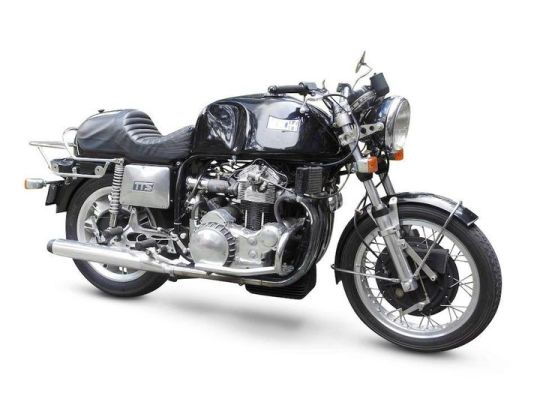
1974 MÜNCH MAMMOTH TTS-E 1200 -The motorcycle world is a richer place for the likes of Friedl Münch. Starting in 1966, working out of his shop in West Germany, he gave us one of the most interesting, charismatic motorcycles ever to roll a wheel. His Münch Mammoth – Mammut in German – can rightfully lay claim to being the world's first superbike. "It was simply the fastest, most powerful, most expensive bike of its time," wrote moto-historian Hugo Wilson of the outrageous machine.
Not content with the twin-cylinder motors powering most bikes of the day, Münch went to the automotive arena and plucked the engine from an NSU 1000 TT Prinz. In retrospect, this engine seems almost perfectly suited for motorcycle use. Four cylinders in line, 1,000cc, air-cooled, with a single overhead cam and a rugged five-main-bearing crankshaft. The Münch-designed frame was a robust twin-cradle affair, obviously inspired by the stellar Norton Featherbed, best of the day. Two years before Honda's blockbuster CB750, Münch produced the world's first modern inline-four.
Not that it was a simple drop-in operation. Münch would need to fabricate an oil pan, primary cover and gearbox case – the latter carrying a modified four-speed cluster from the defunct Horex operation. He wanted more horsepower than stock, so camshafts had to be developed, dual-throat Weber carburetors fitted. No problem for Friedl, engineer and inveterate tinkerer.
Everywhere your eyes fall on a Münch, you see components designed without regard to cost. Friedl Münch was an indefatigable one-man design team, not hemmed in by norms in his pursuit of weight savings, power or speed. Münch's metal of choice for his castings was electron, a magnesium-alloy lighter than aluminum, though harder to work with. Besides various covers and cases, he used electron for the one-piece seat base/rear fender, the double-leading-shoe front brake of his own design and the vaned rear wheel, also his own design and the first cast motorcycle rim to make production. Like the rest of the bike, the exotic metal was not cheap: At a time when a top-of-the-line BMW sold for $1,895, buyers had to part with $4,000 to acquire one of those first Münch Mammoths.
Only a handful of the Series 1 Mammoths were built, as few as 14, with just nine making their way to America, where they were sold as Clymer-Münch Mammoth IVs, thanks to a partnership with publisher and wheeler-dealer Floyd Clymer. Clymer's ad slogan for the bikes was, "Built up to a Standard, Not Down to a Price." Upon Clymer's death in 1970, importation of subsequent Mammoths passed through a variety of hands. Worldwide it's estimated that perhaps 500 bikes were built before operations ceased in 1975 – though as has been pointed out, bookkeeping was never Friedl's strongpoint. As production continued into the Seventies, in effect every machine was a special order, no two alike. This 1974 TTS-E, built for Ford of Europe engineer Helmut Bickenbach, illustrates the point perfectly. With the Alps in his backyard, Bickenbach liked to sport tour, so ordered frame no. 246 as the foundation of a long-wheelbase chassis, some 2-3in. longer than the usual short-coupled Münchs. By '74 stock displacement had grown to 1200cc, but in search of 100bhp he specified the engine be bored to 1286cc, requiring separate cast iron cylinder barrels. Also added to the work order was a high-lift cam, bigger valves and a quad-port Kugelfischer mechanical fuel -injection sytem – making the bike an Einspritzer, hence the E in its model designation. In those days before electronic onboard computers, fuel injection had to mechanically mapped, accomplished here by a quaint ramp-and-ball setup. By request the TTS-E was outfitted with a long-distance fuel tank holding almost 9gal., plus a well-padded solo seat complete with lidded tool compartment. The optional single 200mm Sportlich headlight was selected over the usual dual-beam arrangement. Leading the TTS down the road was a stout fork assembly made to Münch's specs by the UK's Rickman Brothers to accommodate Friedl's massive 250mm four-shoe racing brake. Also on Bickenbach's wish-list were twin oil coolers and a chromed luggage rack that also served as mounting point for a pair of saddlebags. Second owner of this TTS-E was Perry Bushong, master mechanic, Münch aficionado and formerly the longtime BMW dealer in Fort Worth. He purchased the bike in 1986 from Bickenbach, who had been transferred to Detroit and taken the Münch with him. Bushong actually met Friedl Münch in the mid-'60s on a trip to Germany. The two remained in touch and became friends; in fact, on a visit to the U.S. Münch made a point of visiting Texas to see Bushong – and to lay hands on the bike's timing, which had been acting up. Bushong enjoyed the Münch for 25-plus years and put on most of the 23,000 kilometers now showing. In 2012, John Landstrom of Blue Moon Cycle in Norcross, Georgia became the third and current owner of Münch TTS-E no. 246. In his care it was shown at the exclusive Hilton Head Concours in 2017, and now, with a new battery and fresh tune-up, is ready for a new owner to enjoy. Included in the sale are an owner's handbook, service records/receipts going back to 1974, original advertising poster and sales brochure, original German and Texas titles, and hand-written notes by Friedl Münch. Mr. Münch is no longer with us, but his motorcycles remain – rare, quirky, charismatic, technically advanced, historically significant, a fitting reflection of the man who made them.33833818 CommentsLikeComment
4 notes
·
View notes
Text
Tej Kohli: Profile Of A Technologist
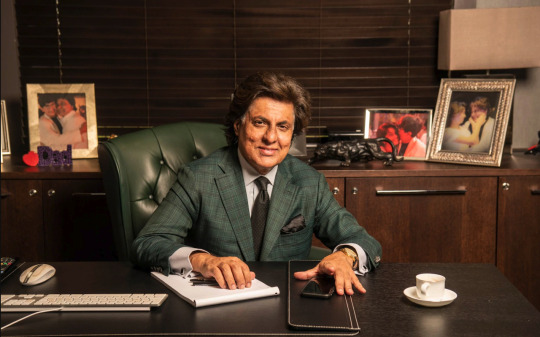
Tej Kohli is a philanthropist who is well known for his worldwide mission to eliminate corneal blindness from poor and underserved communities by 2035. In 2006 he sold a company that he had founded just seven years earlier as part of a high value sale. The company specialised in online payment gateways for high risk sectors and also in the acquisition, turnaround and trade sale of online gaming properties. Since this 2006 liquidity event Tej Kohli has been actively engaged in building the not-for-profit Tej Kohli Foundation.
Tej Kohli is also an impact investor focused on artificial intelligence, robotics and biotechnology ventures that have the potential to drive positive human impact. His impact investments include proprietary technologies that have the potential to have a transformation impact in a variety of applications. Ventures backed by Tej Kohli are engaged in activities ranging from resolving the treatment gap that leads to poverty-driven blindness through to solving the logistical challenges of organ donation and even using machine learning to dramatically increase the efficiency of plastics recycling.
Tej is a father to two teenagers and has been married to his wife Wendy for over twenty years. He is a keen esports fan and an unashamed supercar enthusiast. He is also an avid ballroom dancer who has competed in international events. Tej Kohli regularly shares his thoughts and wisdom in a series of #TejTalks blogs and is an active user of social media.
Here we find out more about the colourful technologist…
What is #TejTalks?
Tej Kohli - #TejTalks is where I share my thoughts and also important information about the things that matter to me or which have captured my attention. I blog using Medium and I also post a lot on Twitter and Facebook. I am not that well known and I am not a public figure, so I do not have much of a platform elsewhere. The beauty of place like Medium and to a lesser extent Twitter, is the ability to make unmediated connections with experts.
The Tej Kohli Foundation for example, is entirely depending on forming new partnerships and coalitions all around the world to solve big challenges. So #TejTalks is a great place to zone in onto some of the constitute parts of those challenges or the underlying factors that are causing them, and to connect and share ideas with relevant experts. A huge proportion of corneal blindness for example is a poverty-driven ailment, and so you cannot solve it without also looking at the underlying causes of poverty. Female inequality also plays a big role in poverty blindness, and so recently I have been learning and blogging about that too.
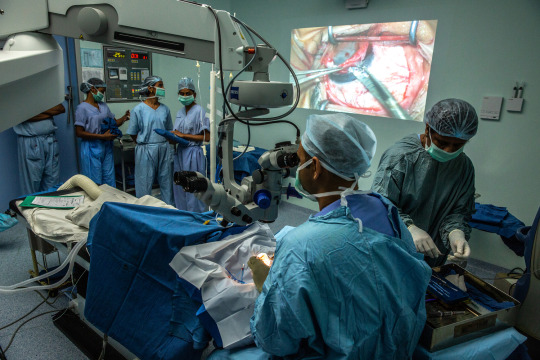
You recently published ‘Rebuilding You: The Philanthropy Handbook’. Why?
Tej Kohli - My own approach to philanthropy has been heaving focused on rebuilding people and communities around the world. And one of the things that I have learned on that journey is that in becoming a philanthropist you cannot simply become a kinder and more benevolent version of yourself. You also need to behave differently, think differently and change your outlook. I wrote ‘Rebuilding You’ as a guide for others who want to use their wealth for good, so that they can avoid some of the common pitfalls and have a greater impact more quickly.
I have organised the ‘Rebuilding You’ handbook into key decision areas. Each area will enable would-be philanthropists to combine some of my experiences with their own to synthesise new ideas about how to define a brand of philanthropy that will best achieve their goals.
What is the biggest lesson that you have learned during your career?
Tej Kohli - I am about to turn 63 and I have led a rollercoaster life. People often tell me that my life story would make a great movie, but I tell them that if it was a it would do badly it because the story would not seem believable! I made a single youthful mistake in 1988 that I have regretted ever since and which I still feel great remorse for. I think what that taught me is that sometimes the important thing is to know what not to do.
At the same time if you want to achieve something you need to aim higher and go further than almost every other person is prepared to go, and if you start young like I did, it is inevitable that you will make some mistakes. I feel bad for young people these days as so much of their lives are recorded and documented online. I counsel my kids and their friends to aim high but also to be very careful as any indiscretion could follow them forever.
But the biggest lesson I think I have learned is that you will always have your critics and not to let them detract from what you are doing. It’s best not to give them the satisfaction of allowing them to diminish who you are and what you are doing. The best thing to do is to simply keep going, keep doing good, keep giving back and keep helping others.
youtube
What for you have been the key moments in your life?
You know my mother is 86 now and if I am anything in life then I owe it to her. She has always been there for me and that consistent love and support has been more important to me than any particular moments, except of course for the birth of my son and daughter. I had my children quite late in life, but my kids are by far the thing that I am most proud of.
In terms of my career, my first job after graduating in Electrical Engineering from the Indian Institute of Technology was installing tachometers. I was installing at a facility owned by Rabocomtel and realised that I could design a process controlled which would significantly increase the efficiency of their facilities. It’s a long story, but ultimately, I was able to pitch the idea to the CEO who placed a big order with the company that I worked for. That gave me my first real affirmation of my desire to become an entrepreneur.
When the company that I launched in 1999 reached $100m of turnover was also a key moment for me too. It affirmed my belief in what was possible, and we quickly expanded to employ hundreds of software developers and began buying and turning around companies too. And obviously when that company was sold in 2006 it was a life changing moment.
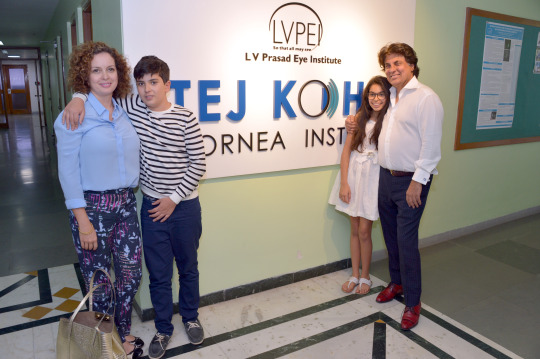
You graduated in from the Indian Institute of Technology with a degree in Electrical Engineering. Do you still consider yourself an engineer?
Tej Kohli - Today I would call myself a technologist, but I think that to be an engineer you now need to be a technologist and vice versa. It was 1980 when I graduated in Electrical Engineering and ‘technology’ as we know it today did not really exist. The Indian Institute of Technology (IIT) remains today one of the top educational institutions in the world and it has become famous for the problem-solving abilities of its engineers.
When the COVID-19 crisis hit in 2020, India found itself with a catastrophic shortage of ventilators, but within weeks engineers at IIT had created a low-cost ventilator that could be manufactured using off-the-shelf parts. They made their design open source so that local manufacturing companies could turn their resources to manufacturing ventilators, which they did. That is an elegant example of engineering and technology coming together.
In 2018 my alma mater conferred their Distinguished Alumnus Award upon me for serving society at large through my work at the Tej Kohli Foundation. That made me proud because part of what we do at the Foundation is to deploy technology to solve human problems.
Who has inspired you most in life?
Tej Kohli - The late Kofi Annan was by far the wisest and most inspirational man that I have ever met. But from a more practical perspective, as obvious as it may sound, I greatly admire Bill Gates. The Bill and Melinda Gates Foundation approach to philanthropy has set a high standard to which all other philanthropists can aspire. The way that Bill Gates defined very specific objectives and then intensively targeted vast resources into both grassroots activities and also major scientific innovations, has been a big source of learning for me that has continually motivated and inspired me to do even more. Bill Gates achieved so much in business and then used that success to achieve so much for others that like me he has almost had ‘two lives’. His example is a wake-up call for any human who has accumulated wealth to consider how they might use that wealth for the betterment of their fellow human beings.
I am also greatly indebted to Michael Milken. His story resonates strongly with me because Milken got ‘tripped up’ by his prodigious early success, but then made a colossal comeback and focused on using his success to help others. Today Milken is one of the biggest funders of research into prostate cancer, and the results are incredible. In 2004 Fortune Magazine called Milken ‘The Man Who Changed Medicine’. Milken shows that it is possible to move on from past youthful mistakes and rebuild yourself for the betterment of other people.
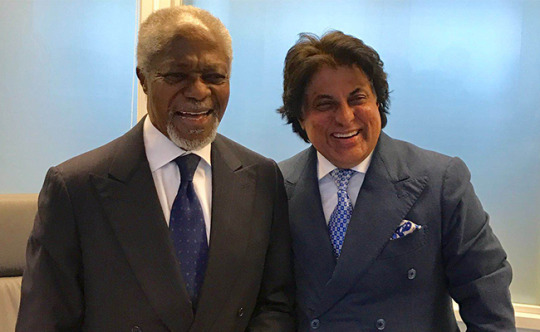
You have been at the helm of the Tej Kohli Foundation for well over a decade. When did your philanthropic ambitions start?
Tej Kohli - It was my wife Wendy who started off our journey into philanthropy when in 2005 we sponsored a group of disabled children in Costa Rica. By 2005 we knew that a sale of my company was imminent, and we wanted to have something new to put all of our energies into. The group of disabled children that we committed to help had varying levels of disability, and our job was to make interventions that would improve their lives. Some had such severe disability that they would need permanent care for the rest of their lives. At the opposite end of the spectrum, with our support one young girl eventually attended college in the USA.
That same year my wife Wendy launched the ‘Funda Kohli’ project by establishing a series of free canteens in Costa Rica, which is where she is from. The canteens are still operational today more than fifteen years later. They feed hundreds of school age children for free every single day to make sure that they have the nutrition and sustenance that they need to thrive.

But today you are best known for your mission to end corneal blindness by 2035, where did that mission come from?
Tej Kohli - In 2010 I was invited to fund donor corneal transplants at Niramaya Hospital in India. There is no history of blindness in my family and corneal blindness is not something that I had known a huge amount about before then. Nowadays I consider myself something of an expert. I was present in 2010 as the recipient of a corneal transplant that I had funded - a 50-year-old man who had been blind for decades - had his bandages removed. The man was able to see his wife and grown up children for the first time in decades.
That was a life changing moment for him and also for me and was my affirmation that having enjoyed so much rapid success in the late 1990’s and early 2000’s, I now wanted to use that success to eliminate corneal blindness. I felt it was my calling.
Another one of the reasons that corneal blindness resonated so strongly with me is because it is at its heart it is a poverty driven ailment. 75% of corneal blindness is either preventable or treatable. But when it is left untreated, it impedes the ability of entire families to become economically successful in communities that are already impoverished. NGOs do not reach a majority of the remote and rural communities in India. In communities that are underserved for healthcare provision due to their remoteness or poverty, there is a huge treatment gap.
The other challenge with corneal blindness, is that because it’s not life threatening, it attracts less attention than some other global health issues. But the social and economic impact of restoring someone’s vision is immense. It changes families forever. That’s why I became determined to make a difference. And by 2015 I was funding so many corneal transplant operations at Niramaya that a bigger facility was needed.
Is that when the Tej Kohli Cornea Institute project was started?
Tej Kohli - The Tej Kohli Cornea Institute in Hyderabad was the biggest project that the Tej Kohli Foundation had ever embarked upon. It opened in late 2015 and by November 2019 it had welcomed more than 223,404 outpatients and completed more than 43,255 surgeries.
People living with corneal blindness or visual impairment in India were often living in total poverty and in some instances could not even afford the train fare to travel to see a doctor, let alone to pay for a complex corneal transplant operation. We treated anyone referred to the Tej Kohli Cornea Institute for free regardless of who they were. It meant that we were able to help people who had been economically ‘shut out’ from the life changing treatment.
There was one girl who was the same age as my daughter whose vision was so poor that she was nearly blind. I was visiting Hyderbad and met her just after she had received her corneal transplant. She gave me a big hug and I couldn’t help thinking how I would feel if this was my daughter. After that I couldn’t stop thinking about how many others like her were still out there. Knowing that I could help them felt like a big responsibility that I wanted to rise to.
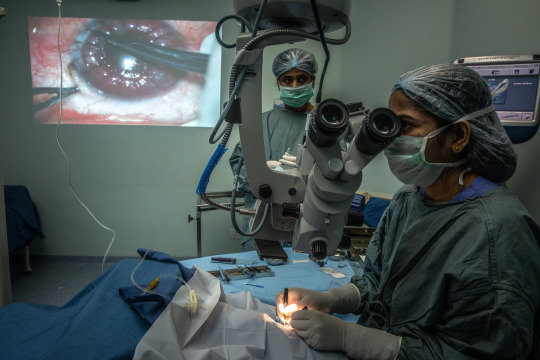
The focus of the Tej Kohli Cornea Institute is in India, but you haven’t lived in India for many decades. What is it that keeps your focus on India?
Tej Kohli - ‘First world’ problems are invariably the ones which it would be relatively expensive to solve. By contrast, high rates of poverty mean that many developing countries are plagued by diseases that it would cost the ‘first world’ comparatively tiny sums to control. In 2018 India commenced the world’s largest experiment in Universal healthcare when the Government granted 500 million people the entitlement to free health insurance overnight.
This will mean that those living below the poverty line in India will no longer have to pay for hospital treatments that would until now have pushed them into crippling debts. But whilst on the surface this is a hugely positive step forward, too much optimism entirely ignores the fact that it will still take many decades and billions of dollars to bring all of India’s healthcare systems up to the equivalent standard of that in the West. Until then, highly pervasive treatment gaps will continue to permeate the poorest communities.
My own focus on India as a philanthropist actually has nothing to do with my own heritage. Unfortunately, India is an epicentre of poverty-driven corneal blindness, and so it is the obvious place for us to be in our mission to combat this form of blindness, the vast proportion of which is either avoidable or treatable. But closing the treatment gaps is about more than money – it is also about logistics, resources, education, knowledge, cultural understanding and having a deep reach into communities. Does my heritage help with this? Yes, a little.
youtube
But in 2020 you announced that you were going to shift your focus away from these direct interventions in favour of finding cures. Why?
Tej Kohli – What has always been abundantly clear from the beginning is the sheer magnitude of the task of closing the corneal blindness treatment gap. I have always felt that official data is incomplete and so in reality there could be ten million people in the world living needlessly with corneal blindness. Most of them are in remote and rural communities across many different countries speaking different languages and with different systems in place.
You simply cannot eliminate corneal blindness by relying on transplantation surgery. Transplantation is too expensive, too complex and too inaccessible for most of the people who need it. The only way to eliminate corneal blindness by 2035 is to bring to market a novel solution that is affordable, scalable and accessible in all circumstances. What you need is a solution that can be applied by ophthalmologists or nurses without surgical intervention.
Finding that ‘universal’ solution is not something that we have just embarked upon: we have been working on it for years and today we have our own intellectual property which we have developed ‘in house’ as well as sponsoring the projects of third parties at major institutions. To begin with we tried to synthesise new corneas from yeast and then later from peptides. We were able to create them, but the rejection rate was too high, and neither solution would have removed the need for invasive sutures and expensive surgery.
It took until 2019 before we achieved a breakthrough when we created a proprietary regenerative solution, which in theory, could be applied using a syringe and cause the cornea to ‘regenerate’ and repair itself. Subject to regulatory approvals, this ‘universal solution’ is now years rather than decades away and could be relevant to more than one third of people with corneal blindness.
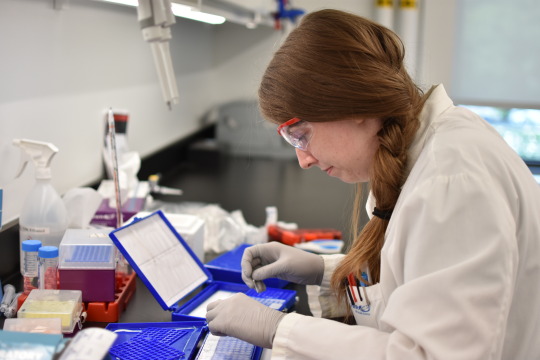
The “major institution” where you are sponsoring projects, is that Harvard Medical School?
Tej Kohli – Actually the Tej Kohli Cornea Program resides at Massachusetts Eye and Ear in Boston, which is a teaching hospital of Harvard Medical School. It is Harvard professors from the Department of Ophthalmology who lead the research that we sponsor at Mass. Eye and Ear, but our donations do directly to the hospital and it is they who administer the spending.
I donated $2m in 2019 to support the development of innovative technologies to improve medical diagnoses and treatments of corneal blindness. That money is going toward two major projects, one being similar to our own in-house project, and the other utilising nano string technologies to aid early diagnostics and preventative treatment. The funds are also used to provide seed funding to projects that address unmet medical needs in ophthalmology. In my mind the first $2m is just the start and we will do more together in the future too.
In 2019 we also inaugurated the Tej Kohli Cornea Institute UK Centre of Innovation in the United Kingdom. The Institute is building a research network to bring scientific expertise together and is also harnessing the best of British innovation to bridge the corneal blindness treatment gap in poor communities by awarding grants to UK-based technological and scientific projects. Decisions are made by an advisory board of UK experts in Ophthalmology.
youtube
Recently you returned to your earliest days of feeding children by launching food support programs in the UK. Why?
Tej Kohli - in the Spring of 2020 the world was plunged into a global crisis due to the Coronavirus. The pandemic required an emergency response of immediate interventions to alleviate individual human suffering. We had for a long time been formulating plans for how we could get involved in the mission to combat holiday hunger in the UK. When the crisis hit we had to bring those plans forward and play our part in supporting the local community.
The Tej Kohli Foundation partnered with community groups to create capacity to deliver 100,000 cooked meals each week to any charities or volunteer groups who need more free food to distribute into their local community. We also created the ‘YouCube’ box, a youth-focused food initiative that aims to ‘repackage’ food provision as an off-the-shelf initiative that existing charity and volunteer groups can adopt to combat hunger in their community.
Now the Tej Kohli Foundation aspires to use the organisational memory that has been developed during this period and the deep community connectivity of the scheme to combat ‘holiday hunger’ amongst children.
You also donated $100,000 toward the development of a vaccine for COVID-19, what motivated that?
Tej Kohli - I donated $100,000 of emergency funding to Harvard Medical School researchers based at the Massachusetts Eye and Ear Hospital in Boston. They had developed a novel and experimental gene-based vaccine which utilises a harmless ‘Trojan horse’ virus as a carrier to bring a tiny piece of the DNA of SARS-CoVid-2 into a patient’s cells, building a protein that stimulates their immune system to fight future infections. I think it is a promising solution to a major global problem, and I am hopeful that it will prove successful.
youtube
Your ‘Future Bionics’ program is funding 3D-printed bionic arms for young people in the UK. How did you arrive at this project?
Tej Kohli – I am immensely proud of our Future Bionics project. It captures so elegantly what the Tej Kohli Foundation is all about: making direct interventions to improve people’s lives using technology, with a particular focus on younger people with their entire life ahead of them. The project came about when I had lunch with the CEO of the company that make the bionic arms and he told me that a lot of families turn to crowdfunding because they cannot afford to purchase one of the arms for their child, and that most of this crowdfunding fails.
The first arm was delivered to a 10-year-old from Blackburn called Jacob as an early Christmas present. He has set a shining example and is a fine young man who is a great role model to other young people. And since then we are working our way through to provide arms to ten young people to begin with. I hope we can continue the program after that, but we will have to take a view on the cost versus the impact once that the current tranche is completed.
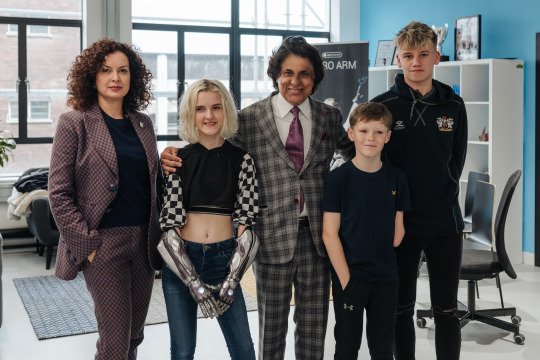
Why do you place so much faith and emphasis into technology?
Tej Kohli – you should never underestimate the role of technology in making the world a better place. We are living through an unprecedented time in human history where a chain reaction of rapid technological development across science and technology is unlocking unprecedented new opportunities to solve major human problems. Technologists can look out across the vista of a hugely rich and fertile landscape of new opportunities to improve human life. Many new and novel solutions are within grasp and simply need to be incubated and ‘proven’ to stimulate their widespread adoption.
Many technologists and entrepreneurs have built successful commercial enterprises or pioneered new technology solutions before. It’s my belief that this expertise is absolutely critical for unlocking the potential of these new and frontier technologies in a way that can have an exponential global impact in terms of solving human problems and improving human life.
I have long been fascinated by deep tech and new frontier technologies. When I started my payment gateways company in Costa Rica in 1999 we were figuring out frontier technologies and combining them to build brand solutions and applications. By the time that I left in 2006 my company employed armies of software developers. And this experience as a technologist is now also part of the DNA of my objectives and ambitions as a philanthropist.
youtube
It was Peter Thiel who noted that “We wanted flying cars, instead we got 140 characters”. Is there a risk that technology will not deliver in the ways that you expect?
Tej Kohli - My real point is that we are now at a watershed moment where the opportunity is to innovate solutions that could eliminate specific areas of human suffering entirely, rather than merely alleviating them. I strongly believe that AI and ‘humanitarian robotics’ have the potential to drive innovations which will alleviate human suffering and hardship, both directly and indirectly. I also believe that humanitarian efforts the world over will be greatly advanced by these emerging technologies as they continue their exponential growth.
That’s why earlier this year I established a new incubator to back scientific projects and commercial ventures that were targeting solutions to corneal blindness, with the caveat that those solutions must be affordable, scalable and accessible in the world’s poorest countries.
You have predicted that artificial intelligence could become a $150 trillion economy within five years, which is ten times more than the current combined output of India and China?
Tej Kohli - Artificial intelligence, and also biotechnology for that matter, are both frontier technologies that are locked into an exponential growth trajectory. The cost of deciphering the human genome has dropped from $3 billion in 2001, to about $1,000 today and what took many months ten years ago can now be done in less than one hour.
I believe that AI will be so manifest within all aspects of life, and that the applications are so broad, that the AI economy will worth four times that of the global Internet economy, which is today worth approximately $50 trillion. AI is also already transforming developing countries. In Nepal, machine learning has been utilised to map and prioritize reconstruction needs after earthquakes. In Africa AI tutors are helping young students to catch up on coursework. NGOs and humanitarian aid agencies are using big data analytics to optimise the delivery of supplies for refugees fleeing conflict and other hardships. And in India rural farmers are being encouraged to use AI to improve crop yields and boost profits.
Technological innovations like these bring us much closer to achieving the United Nations Sustainable Development Goals on issues like eradicating poverty, ending health-care inequality, increasing access to schooling, and combating global warming. And yet the world is only just scratching the surface of what these new technologies could do for human progress.
Your Kohli Ventures investment vehicle focuses on impact investment. Where does philanthropy end and impact investment begin?
Tej Kohli – That’s a good question. Impact investment looks at the double bottom line of profit and social impact. Philanthropy is a good way to spend wealth, but somewhere along the line you need to first generate that wealth. So why not, when the circumstances are right, try to do both at the same time? Take for example Detraxi, a Florida-based biotech company that I wholly own. It’s a commercial venture but could have a significant humanitarian impact.
More than 100,800 solid organ transplants are performed each year worldwide according to the World Health Organisation. Eight lives can potentially be saved by just one organ donor. Demand far outstrips supply, yet thousands of organs get discarded every single year though wastage due to the practical difficulties of preserving and transporting organs. Imagine if you could solve that problem, it would be a good business that would also save thousands of lives? Well that is what we are trying to do by bringing the Detraxi solution to the market.
But which is more important, philanthropy or impact investment?
Tej Kohli - It was Sir Ronald Cohen who said that “the world must change but we cannot change it by throwing money at old ideas that no longer work. To change the world, we must change how we do business, starting with where and when we invest our money”. Can you imagine a world where every investment decision made by every institution also weighed up the human or social impact of that investment? The consequences would be immense.
Worldwide impact investment is currently was worth around $715 billion in 2018, but the International Finance Corporation estimates that based on current demand from investors’ total demand is nearer to $26 trillion, which is fifty times larger. Impact investing already has the power to solve issues that are often beyond governments. And I am convinced that impact investing is one of the best ways of funding the technology-led changes that the world urgently needs in order to solve some of our biggest challenges.
What have been your favourite impact investments so far?
Tej Kohli – my impact investment portfolio is doing very well indeed, but I deliberately do not disclose my investments since having my name associated can eb a hinderance. And anyway, the focus should be the founders and entrepreneurs at those venture, not on me. One of the largest investments I have made was in 2019 when I committed $100m into the Rewired robotics-focused venture studio ‘with a humanitarian bent’.
Rewired is a Switzerland based organisation, so I do not have any direct influence over what they invest in and their portfolio is also a tightly guarded secret. But based on the Rewired investments that are already in the public domain, one of my favourites is Aromyx based in Silicon Valley. Aromyx was originally initiated by the Defense Advanced Research Projects Agency. The company is creating new modalities of data that have the potential to be disruptive across many sectors and applications. In 2019 Aromyx completed a large-scale study with one of the world’s largest chemical companies with a view to deploying Aromyx into the recycling process to improve plastics recycling rates by over 90%.
Other investments publicised by Rewired include Seldon, which is at the heart of accelerating the adoption of machine learning to solve some of the world’s most challenging problems. There is also Raptor Maps, which was founded by MIT Engineers and makes it simple and affordable for solar companies to adopt drone technology as a tool to increase performance. Open Bionics is enhancing the lives of all humans everywhere with its next generation of 3D-printed ‘bionic’ prosthetics. And Elementary Robotics is re-engineering automation intelligence through its deep learning artificial intelligence software.

You have said before that you believe your children, who are teenagers, could live to be at least 125 years old. What will the world be like by 2125?
Tej Kohli - If I look at how the world has changed since I graduated in 1980, and given the acceleration of technological and human progress, I think it’s impossible to imagine the world in 2125. Thanks to economic growth the world is already on track to end extreme poverty by 2030, so perhaps the next 100 years of human history will see humanity unlocking the latent potential that has always been restrained by global inequality.
Of course, there are still major human challenges such as over population, sustainability and climate change that need dealing with. But even during the next decade AI will change every aspect of our lives. So by 2125 I am optimistic that technology will have unlocked even more solutions to these major global challenges.
Time will tell. What I am certain is that the opportunity is right in front of us, and it is for all of us to master it for the betterment of all of humanity.

For more information about Tej Kohli visit:
Tej Kohli official website: http://www.TejKohli.com
Tej Kohli Foundation official website: http://www.TejKohliFoundation.com
Kohli Ventures official website: http://www.KohliVentures.com
Tej Kohli personal blog: https://medium.com/tej-kohli
Tej Kohli Foundation YouTube: https://www.youtube.com/c/tejkohlifoundation
@MrTejKohl on Twitter: https://twitter.com/mrtejkohli
@MrTejKohli on Facebook: https://www.facebook.com/mrtejkohli
Tej Kohli Amazon Author Profile: https://www.amazon.co.uk/Tej-Kohli/e/B08CY13FNR
Tej Kohli Telegraph profile: https://www.telegraph.co.uk/technology/2019/10/04/tej-kohli-indian-tech-billionaire-plans-turbocharge-britains/
1 note
·
View note
Photo
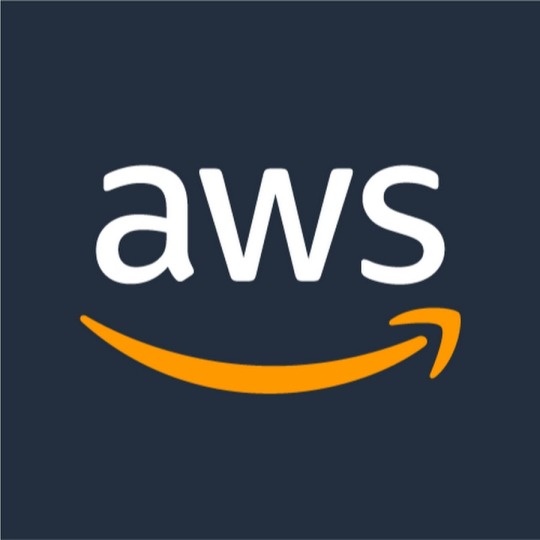
Outside, looking for the highest paid job, disappointed? Please smile, now you will have a new Golden Gate in 2020 that will help you to have a higher salary.
You think I'm joking, but that's not true. Have you ever heard of an Amazon Web Services certificate online that gives you the opportunity to make a career?
If you've heard about this before, you might not be looking for a well-paid job. You have a lucrative compensation package at the top of this company, so you are already in a demanding position.
Today, AWS (Amazon Web Services) is part of Amazon's well-known cloud computing platform. Do you know? Cloud computing will be the way of the future and store all the data in today's world.
This makes it easy to unlock apps in different parts of the world in just a few clicks. This will allow the customer to experience less delay and low cost.
So, if you're looking for a career as a farmer for AWS, the world's leading cloud platform. Then you will land on the right page.
Yes, when you read this article you will learn the top 10 things:
1. What are AWS?
2. What is AWS's goal?
3. What is an AWS certificate?
4. AWS certification types
5. AWS Approval Blessings
6. Company recruit AWS certified experts.
7. What does the AWS certified do?
8. AWS Certified Salary in India.
9. AWS certification Future.
10. Get the best knowledge of AWS for your future!
1. What are AWS?
AWS (Amazon Web Services) is a popular cloud services platform that is currently used by many organizations and individuals around the world.
AWS offers 100+ services worldwide. This includes storage, transportation, database, network and content transfer, management tools, developer tools, media services, analytics, machine learning, security, identity and consistency, application integration, AR and VR, customer engagement, business performance, Internet streaming, desktop and application streams, and game development.
AWS supports a broad, high-security and low-cost infrastructure platform in the cloud. AWS contains a wide range of great analytical data and application services.
As a result, increasing recognition of the modern digital market and changing the work of AWS have made this the most common problem in recent years.
2. What is AWS's goal?
Why Amazon Web Services is a key cloud for companies like Google Cloud Platform, Microsoft Azure, IBM Blue Mix and Alibaba:
1) Modifications
2) Good flexibility and temperament
3) First Class PaaS Offerings
4) High level of security
5) Big Schedule Feature
6) Continuation.
7) Global architecture or world leaders.
8) Good Pricing
3. What is an AWS Certificate?
Since 2013, Amazon Network has launched "AWS certification" and global demand has grown rapidly.
Do you know? AWS has taken the computational skills cloud to a new level and has been adopted as a gold standard around the world. This helps to build a real career on a computer.
Thus, testing certification is a way to manage Amazon's software solutions for Amazon's most popular clouds and use the technology needed to design the IT market.
Therefore, if you pass one or more cloud checks nationwide, you'll see confirmation for AWS.
4. AWS certification types
It is a software programmer, program engineer, system administrator, data administrator, senior data analyst, or professional sales/acquisition. In fact, you use AWS certificates to create successful providers.
Amazon Web Services Certification Training (AWS) has two main categories:
There are three areas of the certificate: architecture, development and processing. This certificate is available at three qualification levels, including stocks, concords and specialists.
· Aws is a certified cloud policy.
· Developers certified from THE Whites and Associates
· AWS certified system administrator system.
· Aws Validate Designer Assistant (Additional Solution Troubleshooting Certificate)
· AWS DevOps are certified as an engineer.
· AWS's solutions and professional designers were evaluated.
AWS Professional Certificate: This professional certificate recognizes best practices in information technology, especially in the field of information security, network ingress and big data.
Check professional plus great data.
· Extended networks that support AWS.
· AWS has been investigating security and experts.
· AWS confirmed Alex Squires.
· AWS certified machine learning machines and experts.
5. AWS Approval Blessings
If you are still wondering why you need to create an AWS certificate, you should see the importance of AWS approval. AWS certificates have sufficient work to follow.
There are unrecordable blessings from AWS proven, some of the following:
· In the AWS cloud has been approved, the company's capability and intelligence confirm.
· Did you know this? AWS Official declaration of international verification and technology certificates.
· If you have AWS certificates, there are many parts of the MNC that are there to interview experts like you.
· This teaching is known as a certificate and trust that is well prepared throughout the operation.
· The biggest blessing to benefit from the evidence is to give confidence and a vote on the day of his career.
As part of the training courses, the employee can deal with a network of such peers and thoughts.
6. Companies that recruit AWS certified experts
The future work of the Ministry of AWS is brilliant and great. As a result, many organisations have advanced the strategy, as many services offer their customers. Some groups include:
· Adobe
· Airbnb
· Alcatel-Lucent
· AOL
· Acquia
· AdRoll
· AEG
· Alert Logic
· Autodesk
· Bitdefender
· BMW
· British Gas
· Canon
· Capital One
· Channel 4
· Chef
· Citrix
· Coinbase
· Comcast
· Coursera
· Docker
· Dow Jones
· European Space Agency
· Financial Times
· FINRA
· General Electric
· GoSquared
· Guardian News & Media
7. What does the AWS certified do?
The Amazon Server Certificate (AWS) will open the golden door for higher payment tasks. So, if your strategy approves, there are many job opportunities at your disposal. Let's look at the highest positions in the AUS you can submit for an AWS certificate.
· Operations Support Engineer
· Software Engineer
· System Integrator
· Cloud Developer
· DevOps Engineer
· AWS Solutions Architect
· AWS SysOps Administrator
· Senior AWS Cloud Architect
8. AWS Certified Salary in India.
According to My Payscale.com, who was in business for the past year or year, had a lot of leaks in 397,015. The professional will be paid through the telecom industry up to Rs.424,266.
9. AWS certification Future.
AWS has been becoming one of the most demanding services for the industries and hence, giving rise to professionals. In IT sector, it gives a high boost.
10.Get the best knowledge of AWS for your future!
The first step in the handbook, which includes the Amazon Web service, is a virtual expert who can plan, and reinstall the AWS ecosystem. Yes, It’s would be beneficial if you get certified from a good institute before looking for a job.
If you are working with an alternative badge without a diploma in your profile, you cannot accept the agreement.
1 note
·
View note